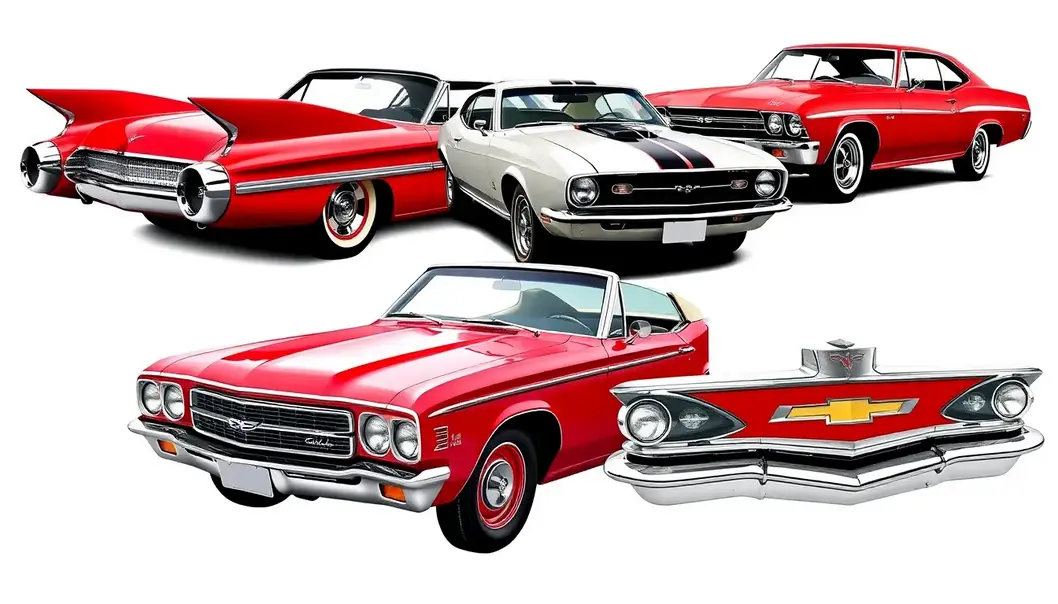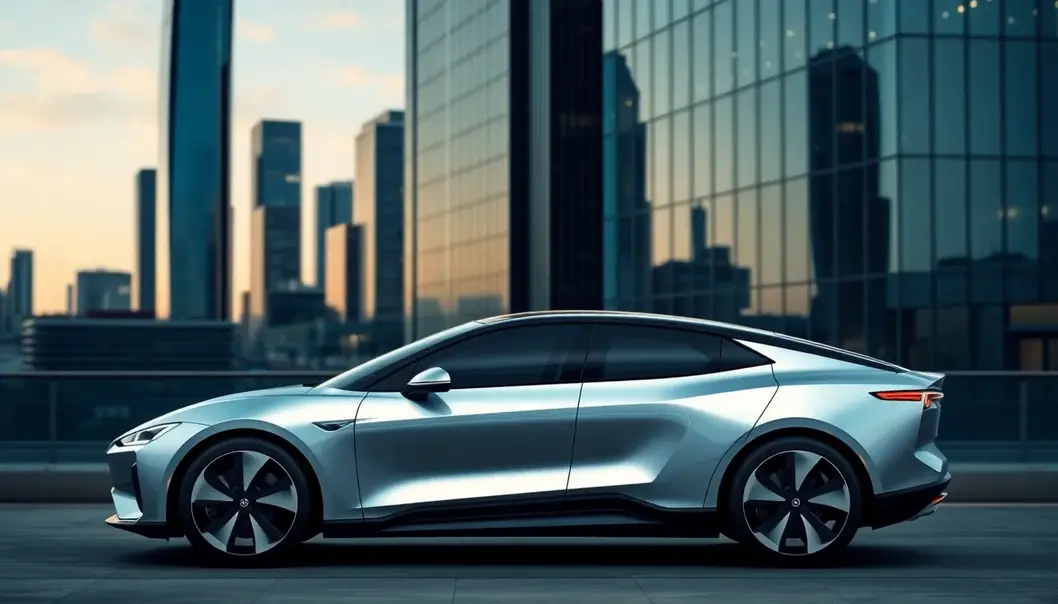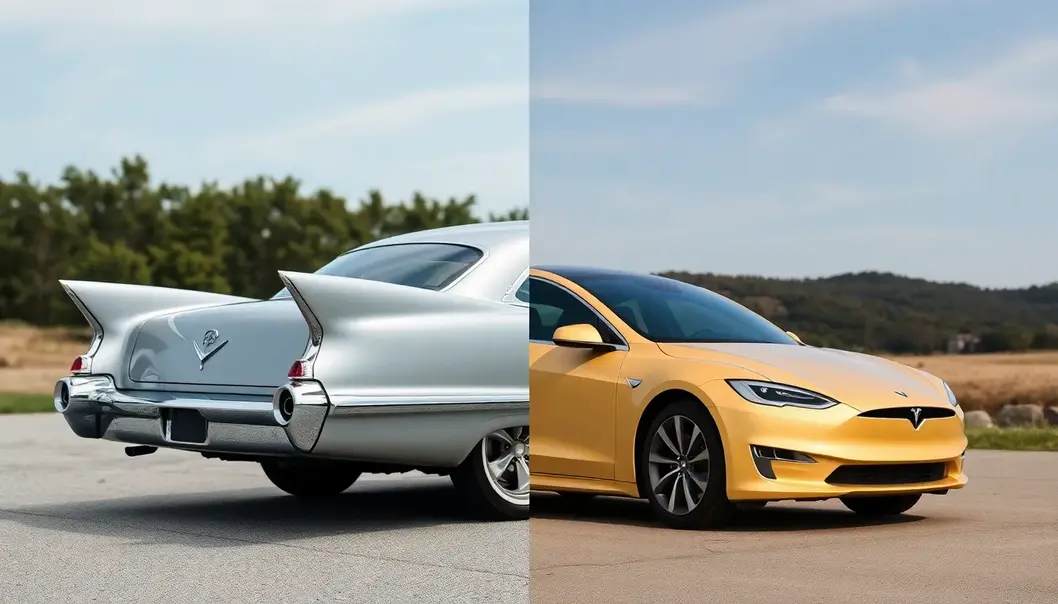Car design has continually evolved, reflecting changing technologies, consumer preferences, and regulatory standards. Beginning with the earliest vehicles, which prioritized functionality over aesthetics, automotive design entered its golden era in the mid-20th century. Today, modern designs emphasize aerodynamics, fuel efficiency, and cutting-edge technology. This journey is not just about the physical changes in vehicles but also a story of cultural shifts and technological advancements that have driven these transformations. This article delves into the fascinating progression of car design, exploring iconic trends and innovations that have shaped the cars we drive today, catering to the reading preferences of busy professionals seeking concise yet informative insights.
The Golden Age: 1950s to 1970s

From the 1950s through the 1970s, car design celebrated flamboyance and an exuberance that mirrored post-war optimism and economic boom. This period, often referred to as the “golden age” of automotive design, witnessed an explosion of creativity that defined the cultural zeitgeist, blending American confidence with rapidly advancing technology.
In the 1950s, automobiles became symbols of prosperity and freedom, sparking imaginations and capturing dreams. The decade’s signature feature, the tail fin, became an iconic representation of this era’s design philosophy. Influenced by jet aircraft and space exploration, tail fins offered both a futuristic look and a nod to American engineering prowess. These bold geometric shapes, often accented with gleaming chrome, illustrated not only an aesthetic choice but also an embodiment of hope in technology’s limitless potential.
Chrome accents proliferated during this time, enhancing vehicles with a gleaming luster that suggested both wealth and progress. Every reflection off a pair of polished bumpers spoke to a nation’s newfound confidence, a byproduct of its growing middle class and booming economy. This period saw cars evolve from mere transportation to aspirational objects, showcasing the era’s cultural embrace of luxury.
The engineering advancements of this period were not solely aesthetic, as the rise of muscle cars in the 1960s underscored a burgeoning emphasis on performance. These high-horsepower machines fascinated a generation, providing unparalleled speed and power. As cultural icons, they catered to the thrill of freedom and individualism, resonating particularly with America’s youth. These cars were a reaction to the socio-political shifts and the desire for rebellion and self-expression during turbulent times.
Technological innovations in manufacturing also played a pivotal role in this design renaissance. The advent of new materials and production techniques allowed designers and engineers more flexibility than ever before. Automated assembly lines became more sophisticated, enabling the production of a wider variety of designs. This diversification in manufacturing processes reflected society’s increasing demand for personal expression, allowing consumers greater choice and access to vehicles that suited their distinct tastes.
This golden era laid the groundwork for future developments, with its blending of bold aesthetic choices and pioneering engineering shaping automotive trajectories for decades. As car enthusiasms grew, so did the possibilities, steering us toward modern evolutions that continue to reflect the ever-changing cultural and technological landscapes.
Modern Mastery: 1980s to Present

The evolution of car design from the 1980s to today reflects a remarkable shift towards technology-driven innovations and sustainable practices. This era of design has been significantly shaped by the quest for aerodynamic efficiency. Sleek lines became a key characteristic, reducing drag and improving fuel economy. This focus on aerodynamics brought about streamlined bodies with less ornamentation, contrasting with the flamboyant designs of previous decades.
Computer-aided design (CAD) emerged as a pivotal tool, allowing designers to push the boundaries of creativity and functionality. CAD facilitates precision and speed in the design process, enabling engineers to experiment with complex shapes and materials. This technological advance has led to vehicles that merge aesthetics with performance, offering both beauty and technological sophistication.
The rise of electric and hybrid vehicles marks another significant paradigm shift. As environmental concerns gained prominence, car manufacturers responded with green technology. The design of these vehicles often highlights their eco-friendly aspect, featuring sleek, futuristic lines and innovative use of lightweight materials like aluminum and carbon fiber. These materials not only enhance fuel efficiency but also improve safety by maintaining structural integrity.
Advanced safety features have become staples of modern car design. From anti-lock braking systems to predictive collision warnings, technology works invisibly yet effectively to protect passengers. Safety no longer merely influences design—it’s a central theme. The integration of sensors and smart technologies ensures that vehicles are not just safe, but also connected and intelligent.
Reflecting deeper societal shifts, modern car design embodies aspirations for a sustainable future, aligning with global efforts to reduce carbon footprints. The focus on futuristic designs and cutting-edge technology underscores a vision for a world where mobility is sustainable, efficient, and pleasurable. This new era is not just about moving people but about moving forward with a conscientious approach to design. To explore more on contemporary technological shifts influencing design beyond automobiles, consider reading about the transformation of personal branding and style here.
Final words
The evolution of car design underscores the interplay between technological advancements and cultural changes. From the bold innovations of the mid-20th century to the sleek, sustainable designs of today, this journey continues to shape how we view and interact with vehicles. Whether driven by aesthetic appeal, performance, or environmental responsibility, each era of car design reflects a distinct narrative of progress. Understanding this history equips us to appreciate the future of automotives as design continues to evolve.
Explore more about the future of car design and technology by visiting our in-depth resources.
Learn more: https://www.carsdesignfuture.com
About us
Cars Design Future offers comprehensive insights into the trajectory of automotive design, highlighting cutting-edge technologies and future trends. Subscribe for expert analyses, industry news, and a platform to connect with car design enthusiasts and professionals.

